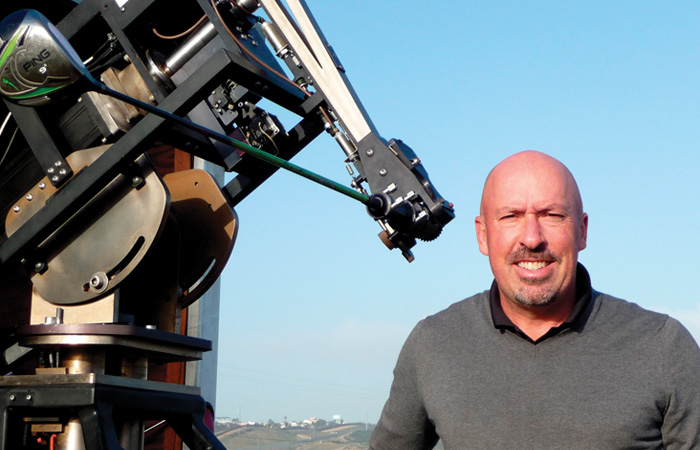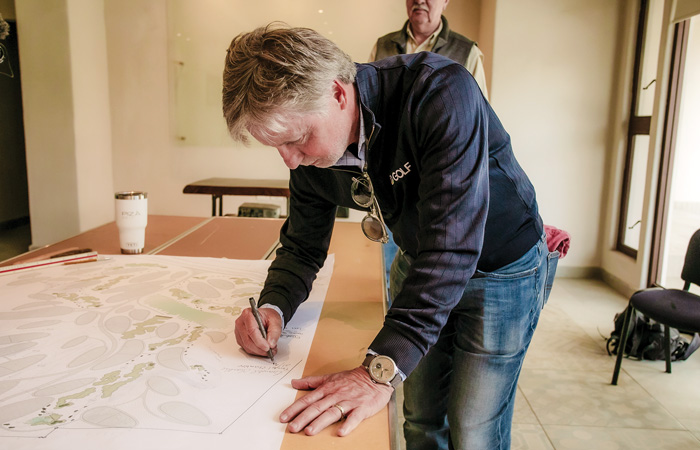While every PGA TOUR victory these days is instantly flashed across the world via TV, magazine articles, internet blogs and social media, with the victor being touted as the newest great thing in golf since the graphite shaft (until the next Sunday, that is), the coach behind the victory is rarely acknowledged. An occasional player might mention his coach in passing – while thanking his entire team – but the rest of the as-opinionated-as-can-be media neither care to research the coach nor find out what he may actually have contributed to the player’s success. So, here is an inside look at the making of a recent major champion and the role his current coach had to play.
Dana Dahlquist is a born-and-raised Long Beach, California, boy who was introduced to golf by his father at age four. He competed in a few mini tour events but even as far back as high school, he wanted to be a golf teacher. “I always was interested in teaching, so even in my high school yearbook a lot of people nicknamed me David Leadbetter.”
Why was the younger Dana so fascinated with the idea of teaching? “Originally it was the pursuit and organization of my own golf swing and that of my friends’. And then when you are edified at doing something well, you just continue to do it, and then that edification creates confidence and then it just kind of perpetuates on itself.” Not sure any longer what tips he gave his high school pals of 30 odd years ago to make them esteem his teaching skills so much, he feels it was probably just simplistic stuff back then, like aim or grip.

Early mentors who took Dahlquist under their wings included Bobby Lasken and Mac O’Grady – they were the big ones. “I feel like Southern California has a very big network of golf, so it’s not like you had to go very far to have a connection to good players or good teachers,” he said. Having started teaching golf in his mid-20, in around 2000, Dahlquist did not at the time have the opportunity to acquire a PGA membership, but simply began to give golf lessons. First at Heartwell Golf Course, then at Skylinks Golf Course and finally, and ever since, at El Dorado Park Golf Course – all Long Beach courses, all municipal courses, and all managed by American Golf.
As you teach so many PGA TOUR players, do you use a lot of technology; what did you use early on and what do you use now? “I originally used camcorders, moved pretty quickly to iPad/iPhone for video,” Dahlquist said. Currently he teaches using Sportsbox AI, Trackman, GC Quad and GASP force plates, “So I kind of have all the tech (that is) kind of normal for the industry.” Every single lesson, whether for a weekend-warrior golfer or a Tour Pro, he will at least use swing videos, mainly through Sportsbox. Why? “Because it’s a very easy way to show players what they’re doing, and it’s a good way to communicate,” he explained.
While on the subject of weekend warriors, anyone can book a lesson through his website. These days, his students are a combination of junior players, intermediate players, competitive players, college players and the pros – both Tour and Long Drive pros. This eclectic mix is what Dahlquist believes keeps his skill set – especially his communication skills – sharp, as he is able to adequately describe action plans for the different levels of golfer.
One of the differences about working with the pros, says Dahlquist, is that as he watched them work, their work ethic, the daily routines that they live and die by, all made him as much of a coach and a golf teacher. He also realized that, with professional players, “you have to be completely transparent and if you know something, you have to say it, and if you don’t know something, you have to say that you don’t know and that’s OK.”
So, how did Dahlquist, who has worked with famous Tour players like Victor Hovland, Charles Howell III, Brian Gay, Dean Wilson, Beau Hossler, K H Lee and others segue into becoming a long-drive specialist? “I wouldn’t say long-drive specialist, but I have a partnership with Josh Koch, who’s a long drive guy, and with the HIT BOMBS program. He is one of the longest hitters in the world and prior to him being a long driver, he was my student.” It broke the mold of conventional teaching as they looked solely at swing mechanics, and they found it eye-opening to get deeper into kinetics and kinematics and how ground forces work and how that can change the kinematics of the swing – in both good and bad ways. He finds it cool now to be able to relate the geometry of the swing to the forces that golfers apply to their system.
Does Dahlquist have any frequently offered ball-flight improvement solutions from his experience working with pros? “Generally speaking, I try to not really worry too much about curvature – we look at things from a speed-versus-launch perspective and the preferences players have for launch angles. I think the big thing is predictability. That’s the number one thing Tour players are looking for – a particular outcome that matches their visualization or the process they’re trying to go through. Matching up the player’s process with the mechanical solution is vital,” he said.

What solutions does Dahlquist have for long drivers that differ from that offered to Tour players? Long drivers must be careful of volume and not golf above hitting 100 balls a day, typically 85, as they make each swing at maximal speed. Additionally, they work on increasing horizontal and vertical forces. Of the force-sources, he looks at verticals (a vertical push off the ground for a longer arms-club lever at impact and, thus, greater club speed) first as they’re the most important for speed development. But when a motion is purely vertical, it might cause hooks, so Dahlquist likes a 50-50 relationship between horizontal and vertical forces. And finally, he likes to see speed created through effective braking, which is about creating better torque. Simply put, the better the brakes and the more force you put in, the more speed you can generate.
Now, finally, to the million-dollar question of Dana Dahlquist’s contribution to Bryson DeChambeau’s recent victory at the 2024 U.S. Open. “I think we started working together two weeks before the PGA last year, before the Rochester tournament, and it was good because I was able to ironically have the conversation around his golf machine background that he and Mike Schy built a golf swing that was very, very accurate. Then he started adding speed to it with Chris (Como), and obviously won the US Open. Chris did really well. Then he (Bryson) and I started talking—it was like how do you kind of blend the two? So it kind of jumps into the conversation of having (an) understanding of golf swing geometry and kinematics and then having a conversation about how to increase forces and torques and identify which one of those influences the geometry. And that’s where you know (we) kind of built in the right pattern.”
What the coach and student do currently, having worked together for a while, is to try to identify whether the ranges of certain aspects of the swing match up consistently, with the amount of speed DeChambeau puts in his system. So, Sportsbox AI helps considerably with tracking whether every swing alignment is within acceptable ranges, and the output of every shot is provided through the now-synched Foresight launch monitor. For instance, are things like rib-cage rotation or side-bend or sway gap (horizontal distance between chest and pelvis when seen face-on) or pelvic lift-and-lower consistent on a day-to-day basis? All that can then be matched, downstream, to the outcome, which should be consistent, too.
A lot of what they do now is remote, as DeChambeau has a studio at home. Once or twice a quarter Dahlquist will visit with DeChambeau for about two days and work for four to six hours a day. Other than that, Dahlquist travels to every major to be on hand with any troubleshooting that might crop up. “He does not stress too much on trying to change things too often. He likes the ‘machine’ just to run – it’s kind of a good thing he’s not constantly making changes,” Dahlquist said.
Were there any specific ball flight patterns DeChambeau was looking to improve when he first met with Dahlquist? How many different ideas did they try? “He wanted to hit a consistent push draw so that the ball would start right and draw back, and when we started, he had a start left and then an occasional block – that went away pretty quickly,” Dahlquist said. Currently, admits Dahlquist, what has made his life much easier is that Bryson’s equipment now fits. “He (DeChambeau) had some data and did his own deep dive into equipment, especially bulge and roll with the driver.”
In the ultimate analysis, what does Dana Dahlquist, popular golf coach from Southern California, believe was his main contribution to DeChambeau’s U.S. Open win at Pinehurst? “I would say that being confident that he knew his swing was in a position … I feel that he now feels he’s more organized than anybody else – which is true.” Organized? “He’s not searching on a Tuesday before a tournament; he knows what he needs to get done to make the swing perform the way he wants it to.”
Congratulations, Dana, and congratulations to DeChambeau on his big win at Pinehurst.